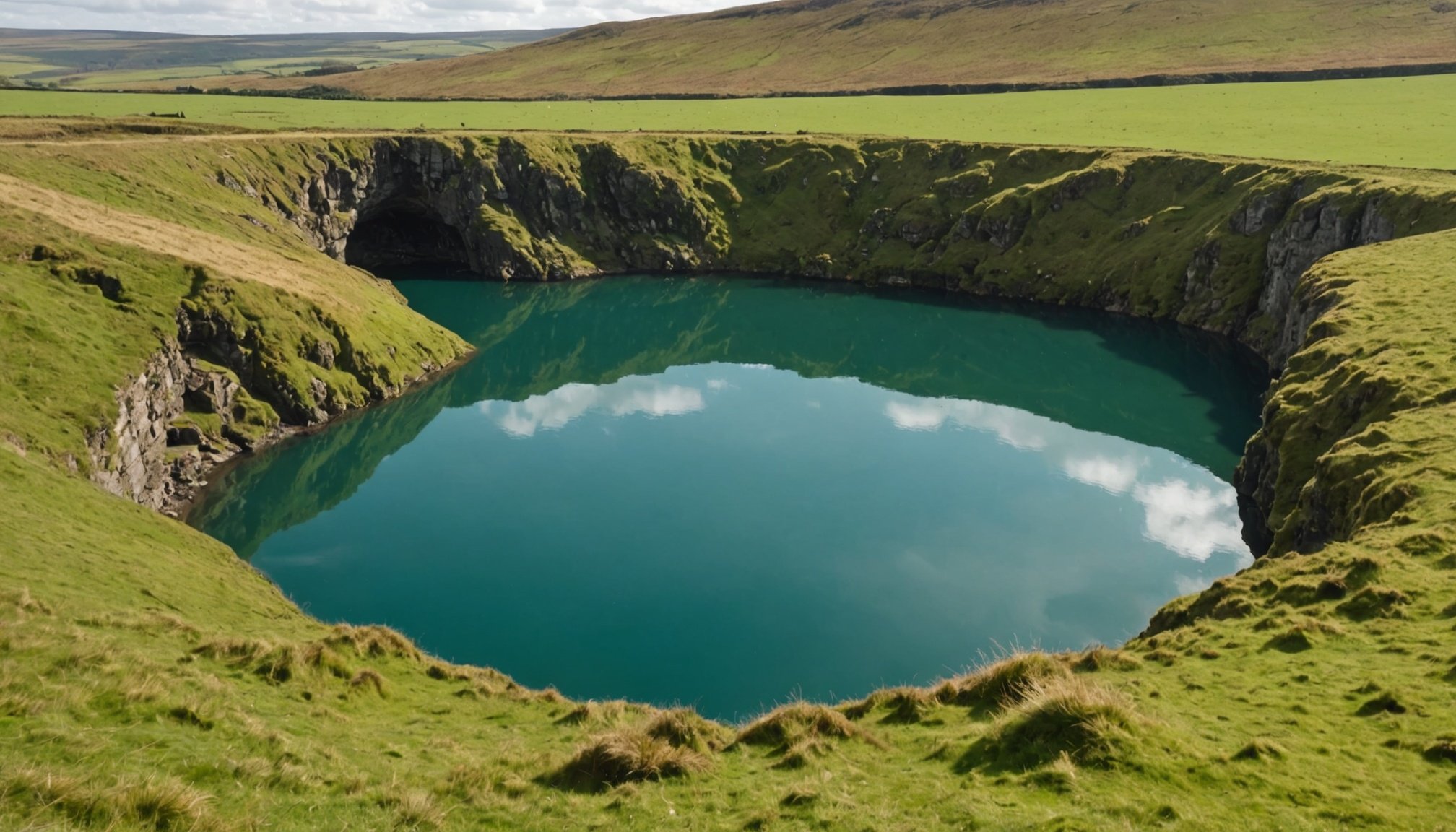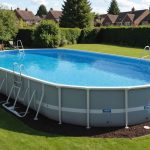Navigating the Unique Challenges of Black-Bottom Pools in the UK’s Climate
Understanding the Appeal and Challenges of Black-Bottom Pools
Black-bottom pools have gained popularity in recent years due to their aesthetic appeal and potential energy-saving benefits. However, maintaining these pools in the UK’s climate presents several unique challenges that pool owners must navigate.
Aesthetic and Energy Benefits
Black-bottom pools appear deeper and more luxurious, enhancing the visual appeal of any backyard. Moreover, the dark color of the pool surface can absorb more sunlight, potentially warming the water naturally. This can be particularly beneficial in the UK’s cooler climate, where heating a pool can be costly.
Lire également : Essential Guide to Safely Winterizing Your Swimming Pool in the UK: Step-by-Step Instructions
"Black-bottom pools are not just visually stunning; they also offer a natural way to warm the water, which is a significant advantage in cooler climates like the UK," says Jane Smith, a pool maintenance expert.
Climate Considerations
The UK’s climate is characterized by cool winters and mild summers, which can affect the pool’s water temperature and maintenance needs. Here are some key climate-related challenges:
- Temperature Fluctuations: The water temperature in black-bottom pools can fluctuate significantly due to the UK’s variable weather. This requires careful management of heating systems to maintain a comfortable swimming temperature.
- Rainfall and Water Quality: High rainfall in the UK can lead to increased water volume issues and the need for frequent water testing and balancing to ensure the water remains safe and clean.
- Seasonal Maintenance: The transition between seasons requires specific maintenance routines. For example, preparing the pool for winter involves thorough cleaning, covering, and possibly draining to prevent damage from freezing temperatures.
Managing Water Quality and Volume Issues
Maintaining optimal water quality is crucial for any pool, but it becomes even more challenging with black-bottom pools due to their unique characteristics.
A découvrir également : Exploring the Most Aesthetic Pool Designs Perfect for UK Residences
Water Testing and Balancing
Regular water testing is essential to ensure the water is safe and clean. Here are some key parameters to monitor:
- pH Levels: The ideal pH range for pool water is between 7.2 and 7.8. Deviations from this range can cause eye irritation and damage to the pool equipment.
- Chlorine Levels: Proper chlorine levels are vital for disinfecting the water. The recommended level is between 1 and 3 parts per million (ppm).
- Alkalinity: Total alkalinity helps stabilize the pH levels. It should be maintained between 80 and 120 ppm.
| Parameter | Ideal Range | Importance |
|
|-----------------------|
|
| pH | 7.2 - 7.8 | Prevents eye irritation and equipment damage |
| Chlorine | 1 - 3 ppm | Ensures proper disinfection |
| Alkalinity | 80 - 120 ppm | Stabilizes pH levels |
| Calcium Hardness| 200 - 400 ppm | Prevents etching of the pool surface |
| Stabilizer (CYA)| 30 - 50 ppm | Protects chlorine from sunlight degradation |
Dealing with Volume Issues
High rainfall in the UK can lead to overflow and water volume issues. Here are some strategies to manage these issues:
- Automatic Pool Covers: These covers can help prevent debris from entering the pool and reduce water evaporation.
- Drainage Systems: Ensuring that the pool’s drainage system is functioning correctly is crucial. Regularly inspect and clean the skimmer baskets and pump strainer.
- Water Level Management: Regularly check the water level and adjust it as necessary to prevent overflow.
Using Pool Covers Effectively
Pool covers are an essential tool for maintaining black-bottom pools, especially in the UK’s climate.
Types of Pool Covers
There are several types of pool covers available, each with its own advantages:
-
Bubble Covers: These covers are made of a plastic material with bubbles that trap heat and prevent evaporation. They are particularly effective in warmer months but can also be used during the winter to protect the pool from debris and freezing temperatures[3].
“`quote
“Bubble covers are a game-changer for pool owners. They not only help in heating the water naturally but also reduce the need for chemical treatments and filtration,” says Mark Johnson, a pool owner in the UK.
“` -
Winter Covers: These covers are designed to protect the pool during the winter months. They are typically made of a heavier material and have drainage holes to allow rainwater to pass through while keeping debris out[3].
Installation and Maintenance
Proper installation and maintenance of pool covers are crucial for their effectiveness:
- Enrollers and Accessories: Use enrollers and other accessories to make the installation and removal of the cover easier. These can include manual or motorized enrollers and attachments that secure the cover to the pool[2][3].
- Regular Inspection: Regularly inspect the cover for any damage or wear and tear. Repair or replace the cover as necessary to ensure it continues to function effectively.
Environmental Considerations and Climate Change
The maintenance and operation of black-bottom pools must also consider broader environmental and climate change issues.
Energy Security and GHG Emissions
Pools, especially those with heating systems, contribute to greenhouse gas (GHG) emissions. Here are some ways to reduce this impact:
- Low Carbon Heating: Consider using low-carbon heating options such as solar heaters or heat pumps.
- Energy-Efficient Equipment: Use energy-efficient pool pumps and filtration systems to reduce energy consumption.
- **Solar Heaters**: Harness solar energy to heat the pool water.
- **Heat Pumps**: Use heat pumps as an efficient alternative to traditional gas or electric heaters.
- **Energy-Efficient Pumps**: Install variable-speed pumps that consume less energy.
- **Greenhouse Gas Reduction**: Implement carbon capture technologies or offset GHG emissions through reforestation programs.
Compliance with Climate Change Policies
The UK government has set ambitious targets to achieve net zero GHG emissions by 2050, in line with the Paris Agreement. Pool owners can contribute to this effort by adopting environmentally friendly practices:
- Net Zero Targets: Align pool maintenance and operation with the UK’s net zero targets by reducing energy consumption and GHG emissions.
- Environmental Improvement Plans: Develop annual improvement plans that include measures to reduce the pool’s environmental footprint.
"As we move towards a net zero future, every small action counts. By choosing energy-efficient pool equipment and adopting sustainable practices, pool owners can make a significant contribution to reducing our carbon footprint," says Dr. Emma Taylor, a climate change researcher.
Case Study: Successful Pool Management in the UK
A case study from a pool owner in the UK highlights the importance of careful planning and maintenance.
Annual Maintenance Routine
A pool owner in Surrey, UK, has developed an annual maintenance routine that includes:
- Spring Preparation: Thoroughly clean the pool and its surroundings, inspect the equipment, and perform any necessary repairs before the swimming season.
- Summer Maintenance: Regularly test and balance the water, clean the skimmer baskets, and ensure the pool cover is in good condition.
- Winter Preparation: Drain and clean the pool, cover it with a winter cover, and protect the equipment from freezing temperatures.
"Our annual maintenance routine has been crucial in keeping our black-bottom pool in excellent condition. It's a lot of work, but it's worth it to enjoy a safe and clean swimming environment," says the pool owner.
and Future Outlook
Managing black-bottom pools in the UK’s climate requires a comprehensive approach that considers both immediate maintenance needs and long-term environmental impacts.
Practical Advice for Pool Owners
Here are some practical tips for pool owners:
- Regular Maintenance: Regularly test and balance the water, clean the pool and its equipment, and inspect the pool cover.
- Energy Efficiency: Use energy-efficient equipment and consider low-carbon heating options.
- Environmental Awareness: Develop an environmental improvement plan that aligns with the UK’s climate change policies.
As we move forward in addressing global climate change, the way we manage our pools will play a small but significant role in our collective efforts towards a more sustainable future.
"By taking small steps towards sustainability in our daily lives, including how we manage our pools, we can contribute to a larger movement towards a greener, more environmentally conscious world," says Dr. Taylor.











